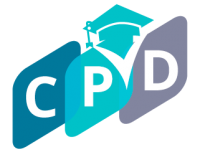Introduction:
The academic landscape is diverse, encompassing a wide array of subjects with unique challenges and content structures. Studying effectively across different subjects requires adaptability and a strategic approach that recognizes the nuances of each discipline. In this article, we’ll explore techniques and strategies to help students adapt their study methods to the specific demands of various subjects, fostering a more comprehensive and successful learning experience.
- Understanding Subject-Specific Demands: Each subject comes with its own set of demands, ranging from memorization in history to problem-solving in mathematics and critical analysis in literature. Understanding the specific requirements of each subject is the first step toward tailoring your study approach. Identify the key skills and knowledge areas that each subject emphasizes.
- Customizing Note-Taking Methods: Note-taking is a universal study practice, but the way you take notes can vary across subjects. For science and mathematics, concise and structured notes may be more effective, focusing on formulas and problem-solving steps. In contrast, humanities subjects may benefit from more detailed and interpretive notes that capture nuances of arguments and themes.
- Utilizing Active Learning Techniques: Active learning engages students in the learning process through activities such as discussions, problem-solving, and hands-on experiences. While science subjects might benefit from experiments and simulations, social sciences may thrive on debates and case studies. Incorporate subject-specific active learning techniques to reinforce concepts and enhance understanding.
- Adjusting Reading Strategies: Reading strategies should be tailored to the nature of the content. For dense scientific texts, skimming and scanning may be necessary to extract key information quickly. In literature or philosophy, a more thorough and reflective reading approach may be required to grasp intricate concepts and themes. Adjust your reading strategy based on the subject matter.
- Problem-Solving Approaches in STEM Subjects: STEM (Science, Technology, Engineering, and Mathematics) subjects often involve problem-solving and application of theoretical knowledge. Develop a systematic approach to problem-solving, breaking down complex questions into manageable steps. Practice is crucial in mastering problem-solving skills, making regular exercises an integral part of studying STEM subjects.
- Engaging with Visual Aids: Visual aids, such as diagrams, charts, and graphs, can be powerful tools in subjects like biology, geography, and physics. Visual representations help in understanding complex relationships and concepts. Experiment with creating mind maps, flowcharts, and other visual aids to reinforce visual learning in applicable subjects.
- Incorporating Memorization Techniques: Certain subjects, such as history or languages, require memorization of facts, dates, and vocabulary. Employ mnemonic devices, flashcards, and memory techniques to enhance retention. Additionally, repetition and regular review are essential for embedding memorized information into long-term memory.
- Critical Thinking in Humanities and Social Sciences: Humanities and social sciences demand a strong emphasis on critical thinking and analytical skills. Engage with the content by questioning assumptions, evaluating arguments, and considering different perspectives. Discussions, essay writing, and critical analysis exercises are valuable tools for developing these skills.
- Adapting Study Environments: The optimal study environment can vary across subjects. For subjects requiring deep concentration, such as mathematics, a quiet and focused environment may be beneficial. Subjects involving creativity, like art or writing, might benefit from a more relaxed and inspiring setting. Adapt your study environment to suit the nature of the subject you are tackling.
- Time Management for Varied Workloads: Different subjects may have varying workloads and assignment deadlines. Develop a comprehensive time management strategy that accommodates the diverse demands of your subjects. Prioritize tasks based on deadlines and the complexity of the content, ensuring a balanced approach to your studies.
- Balancing Qualitative and Quantitative Approaches: Some subjects lean heavily on qualitative analysis, while others are more quantitative. Strive to strike a balance between qualitative and quantitative approaches in your study methods. For example, in interdisciplinary projects, this balance may be crucial for a holistic understanding of the content.
- Seeking Subject-Specific Resources: Explore resources tailored to each subject. Subject-specific textbooks, online courses, and academic journals provide in-depth insights and supplement your understanding. Take advantage of subject-specific resources to gain a more nuanced comprehension of the material.
- Embracing Interdisciplinary Connections: In the modern academic landscape, interdisciplinary connections are increasingly common. Recognize the interrelatedness of different subjects and seek opportunities to connect concepts across disciplines. Interdisciplinary thinking enhances creativity and allows for a more holistic understanding of complex issues.
- Building Subject-Specific Study Groups: Joining or forming study groups specific to each subject can be advantageous. Study groups provide diverse perspectives and expertise, especially when dealing with subjects that involve collaborative problem-solving. Engage in discussions, share insights, and learn from your peers’ approaches to different subjects.
- Reflecting on Learning Strategies: Regularly reflect on the effectiveness of your learning strategies across different subjects. Consider what approaches work best for each subject and be open to adjusting your methods as needed. Reflective practice contributes to continuous improvement and adaptability in your study habits.
Conclusion:
Adapting study techniques to different subjects is a dynamic process that requires flexibility and an understanding of the unique demands of each discipline. By customizing note-taking methods, adjusting reading strategies, and embracing subject-specific resources, students can navigate the diverse academic landscape more effectively. The key lies in recognizing the nuances of each subject and tailoring your approach to foster a deeper and more comprehensive understanding across varied disciplines.
